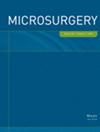Above elbow transplants represent 19% of the upper extremity transplants. Previous large-animal models have been too distal or heterotopic, did not use immunosuppression and had short survival. We hypothesize that an orthotopic forelimb transplant model, under standard immunosuppression, is feasible and can be used to address questions on peri-transplant ischemia reperfusion injury, and post-transplantation vascular, immunologic, infectious, and functional outcomes.
Four forelimbs were used for anatomical studies. Four mock transplants were performed to establish technique/level of muscle/tendon repairs. Four donor and four recipient female Yucatan minipigs were utilized for in-vivo transplants (endpoint 90-days). Forelimbs were amputated at the midarm and preserved through ex vivo normothermic perfusion (EVNP) utilizing an RBC-based perfusate. Hourly perfusate fluid-dynamics, gases, electrolytes were recorded. Contractility during EVNLP was graded hourly using the Medical Research Council scale. EVNP termination criteria included systolic arterial pressure ≥115 mmHg, compartment pressure ≥30 mmHg (at EVNP endpoint), oxygen saturation reduction of 20%, and weight change ≥2%. Indocyanine green (ICG) angiography was performed after revascularization. Limb rejection was evaluated clinically (rash, edema, temperature), and histologically (BANFF classification) collecting per cause and protocol biopsies (POD 1, 7, 30, 60 and endpoint). Systemic infections were assessed by blood culture and tissue histology. CT scan was used to confirm bone bridging at endpoint.
Animals 2, 4 reached endpoint with grade 0-I rejection. Limbs 1, 3 presented grade III rejection on days 6, 61. CsA troughs averaged 461 ± 189 ng/mL. EVNLP averaged 4.3 ± 0.52 h. Perfusate lactate, PO2, and pH were 5.6 ± 0.9 mmol/L, 557 ± 72 mmHg and 7.5 ± 0.1, respectively. Muscle contractions were 4 [1] during EVNLP. Transplants 2, 3, 4 showed bone bridging on CT.
We present preliminary evidence supporting the feasibility of an orthotopic, mid-humeral forelimb allotransplantation model under standard immunosuppression regimen. Further research should validate the immunological, infectious, and functional outcomes of this model.



